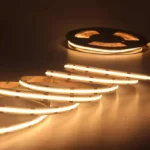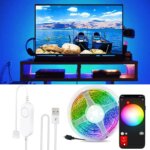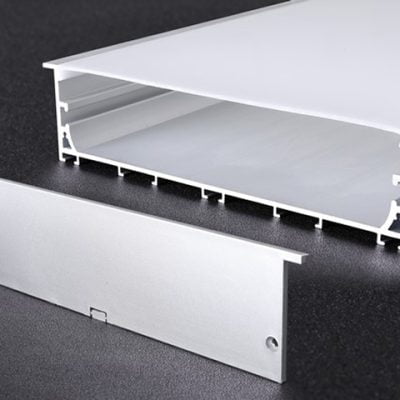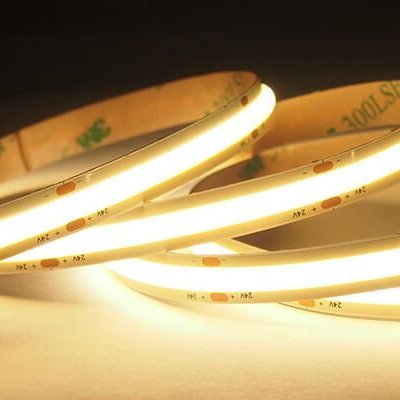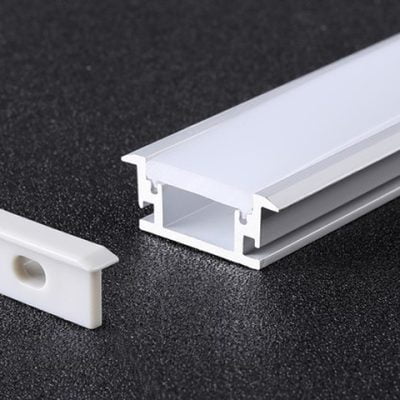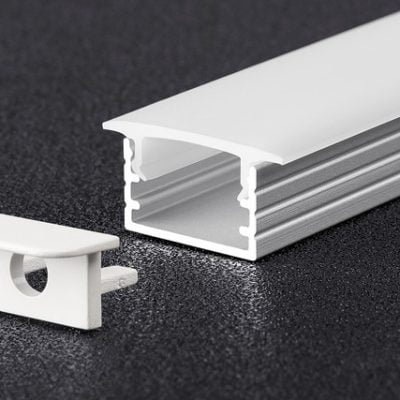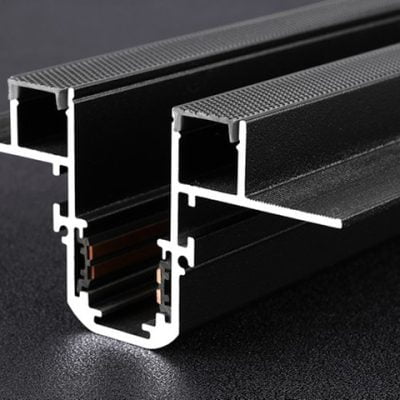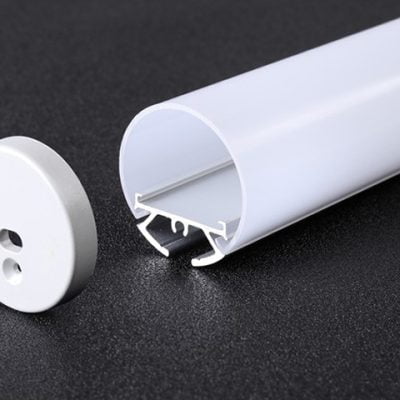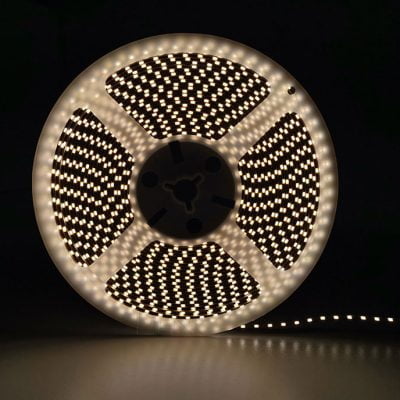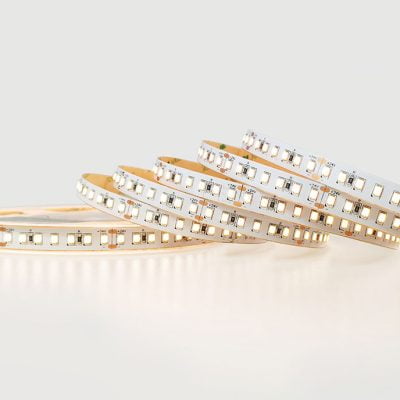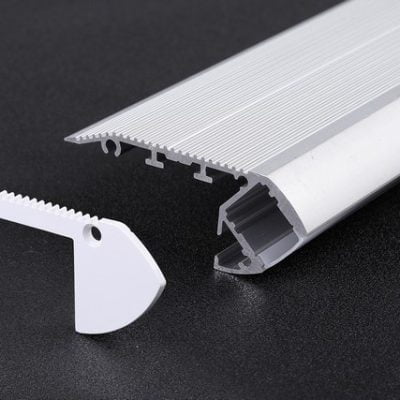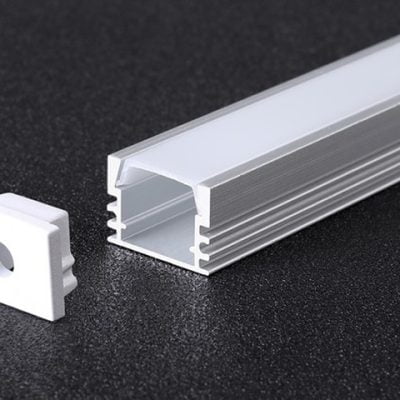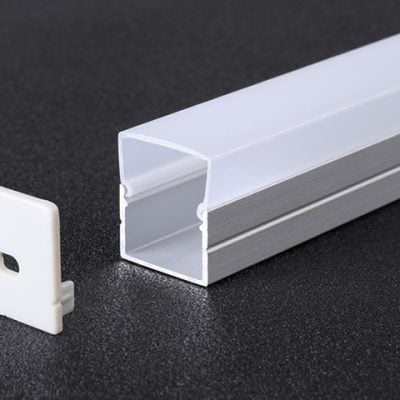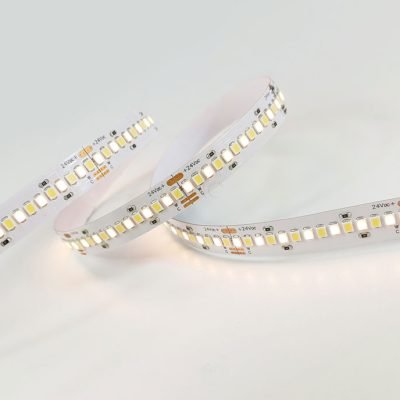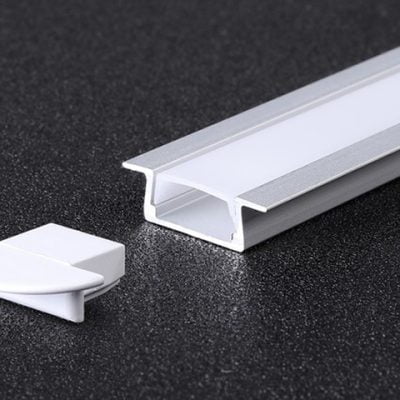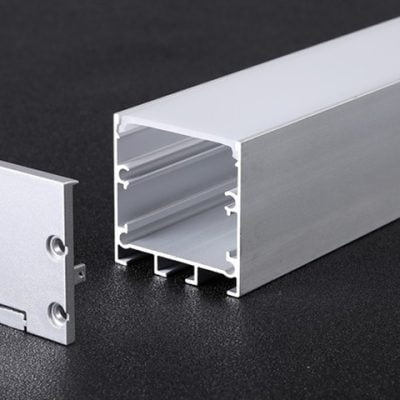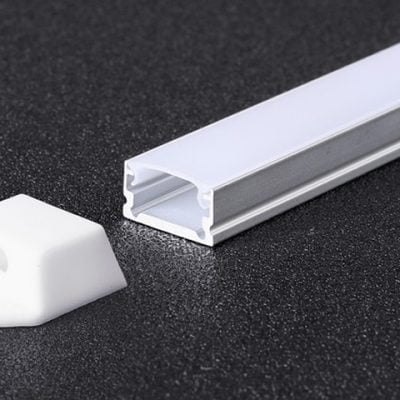
Choosing the right LED strip light can transform your living space, adding both functionality and ambiance. As a professional LED strip light manufacturer from China, we at Lightstec understand the importance of selecting high-quality, smart home-compatible lighting solutions. Whether you're looking for accent lighting in your bedroom or waterproof options for outdoor use, this guide will walk you through the essential steps to choose the perfect LED strip light.
LED strip lights have become increasingly popular in smart homes due to their versatility, energy efficiency, and ability to create stunning visual effects. From creating a cozy atmosphere in your bedroom to adding a modern touch to your ceiling, LED strips offer endless possibilities for home decoration and lighting.
Before we dive into the specifics, it's important to note that not all LED strip lights are created equal. As a leading China LED strip light supplier, we at Lightstec pride ourselves on delivering top-quality products that meet the highest standards of performance and durability.
※ Fact Check: High-quality LED strip lights can last up to 50,000 hours, which is equivalent to over 5 years of continuous use.
※ Fact Check: LED strip lights use up to 75% less energy than traditional incandescent lighting, making them an eco-friendly choice for smart homes.
Table of Contents
- Determine Your Lighting Needs
- Consider Color Temperature and Brightness
- Choose the Right IP Rating for Your Environment
- Smart Home Compatibility and Control Options
- Quality and Durability Considerations
How to Determine Your Lighting Needs?
The first step in choosing the perfect LED strip light is to assess your lighting needs. Are you looking for accent lighting to create a cozy atmosphere in your bedroom, or do you need bright task lighting for your kitchen countertops?
Understanding your specific requirements will help you narrow down your options and choose the most suitable LED strip light for your space.
When determining your lighting needs, consider factors such as the room's size, the desired ambiance, and the primary purpose of the lighting. For example, LED strip lights for bedrooms might focus more on creating a relaxing atmosphere, while strips for a home office might prioritize brightness and color accuracy.

To help you visualize different lighting scenarios, consider the following table:
| Room Type | Lighting Purpose | Recommended LED Strip Features |
|---|---|---|
| Dormitorio | Ambient lighting | Dimmable, warm CCT options |
| Kitchen | Task lighting | High brightness, cool CCT |
| Living Room | Accent lighting | RGB color-changing, smart control |
| Bathroom | Functional lighting | Waterproof, high CRI |
| Home Office | Productive lighting | Adjustable CCT, glare-free |
※ Fact Check: The human eye perceives different color temperatures as more or less relaxing. Warm light (2700K-3000K) is often preferred for bedrooms, while cooler light (4000K-6500K) can enhance productivity in work areas.
※ Fact Check: LED strip lights with high Color Rendering Index (CRI) of 90+ can accurately display colors, making them ideal for areas where color accuracy is important, such as bathrooms or art display areas.
What Role Does Color Temperature and Brightness Play in LED Strip Selection?
Color temperature and brightness are crucial factors that significantly impact the mood and functionality of your lighting. Understanding these concepts will help you choose LED strip lights that perfectly complement your space and meet your lighting needs.
Color temperature, measured in Kelvin (K), determines whether the light appears warm (yellowish) or cool (bluish). For a cozy, relaxing atmosphere in bedrooms or living rooms, opt for warm white LEDs (2700K-3000K). For task-oriented areas like kitchens or home offices, consider cool white LEDs (4000K-6500K) that promote alertness and productivity.
Brightness, measured in lumens, determines how much light the LED strip emits. The right brightness level depends on the room's size and the lighting purpose. For accent lighting, you might want lower brightness levels, while task lighting requires higher brightness.
[sub-heading featured image]
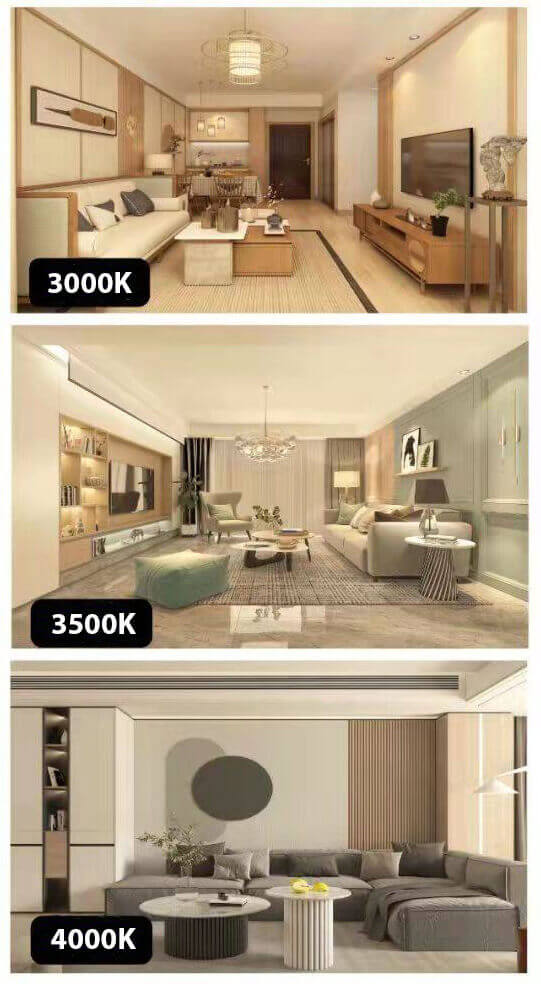
Here's a table to help you understand brightness levels:
| Brightness Level | Lumens per Foot | Suitable Applications |
|---|---|---|
| Bajo | 100-250 | Ambient lighting, TV backlighting |
| Medium | 250-500 | Under-cabinet lighting, cove lighting |
| Alto | 500-1000+ | Task lighting, primary room illumination |
※ Fact Check: Some advanced LED strip lights offer tunable white light, allowing you to adjust the color temperature from warm to cool throughout the day, mimicking natural daylight patterns and supporting your circadian rhythm.
※ Fact Check: The brightness of LED strips can be affected by factors such as the density of LEDs per meter and the quality of the LED chips used. Higher-quality LED strips often provide more consistent and efficient lighting.
Why is the IP Rating Important When Choosing LED Strip Lights?
The IP (Ingress Protection) rating is a crucial factor to consider when selecting LED strip lights, especially for areas exposed to moisture or outdoor environments. This rating indicates the level of protection against dust and water ingress, ensuring the longevity and safety of your lighting installation.
Understanding IP ratings is essential for choosing waterproof LED strip lights that can withstand various environmental conditions. The rating consists of two digits: the first indicates protection against solid objects, and the second against liquids.
For indoor use in dry areas, a standard non-waterproof LED strip (IP20) may suffice. However, for kitchens, bathrooms, or outdoor installations, you'll need higher IP ratings to protect against moisture and water exposure.
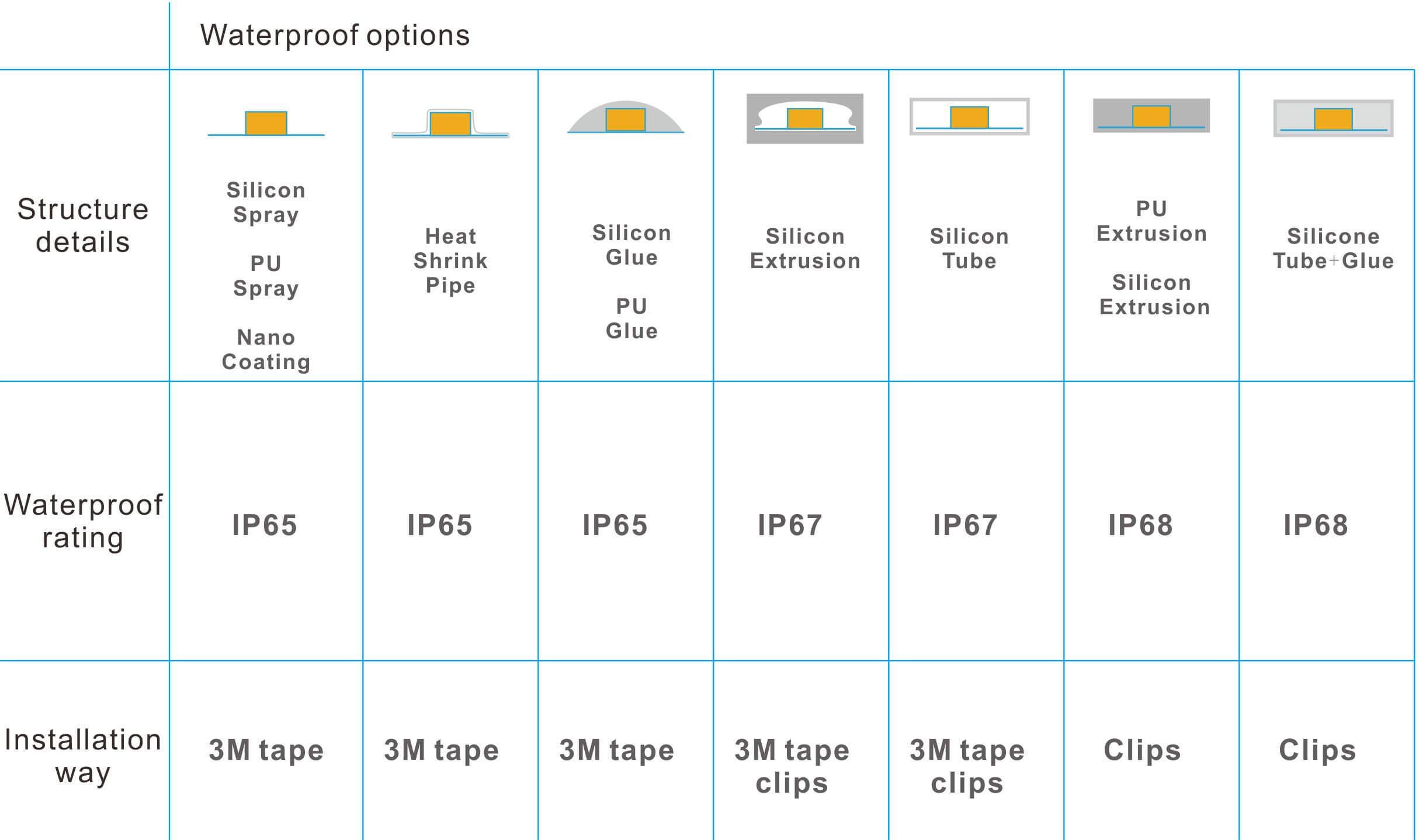
Here's a quick reference table for common IP ratings:
| IP Rating | Protection Level | Suitable Locations |
|---|---|---|
| IP20 | No water protection | Dry indoor areas |
| IP44 | Splash-resistant | Bathrooms, covered patios |
| IP65 | Water-resistant | Kitchens, outdoor under cover |
| IP67 | Waterproof | Outdoor, temporary submersion |
| IP68 | Fully waterproof | Underwater applications |
※ Fact Check: LED strip lights with an IP65 rating or higher can withstand direct water spray, making them suitable for outdoor use in most weather conditions.
※ Fact Check: While higher IP ratings offer better protection, they may also affect the flexibility and ease of installation of the LED strip. Consider the balance between protection needs and installation requirements when making your choice.
How to Ensure Smart Home Compatibility and Control Options?
In today's connected world, smart home compatibility is a key consideration when choosing LED strip lights. The ability to control your lighting through voice commands, smartphone apps, or home automation systems adds convenience and enhances the overall smart home experience.
When selecting LED strip lights for your smart home, look for options that support popular protocols like Wi-Fi, Bluetooth, Zigbee, or Z-Wave. These technologies allow seamless integration with smart home hubs and voice assistants such as Amazon Alexa, Google Home, or Apple HomeKit.
Advanced control options can include features like:
- Color changing and dimming capabilities
- Scheduling and timer functions
- Music synchronization
- Custom scene creation
[sub-heading featured image]
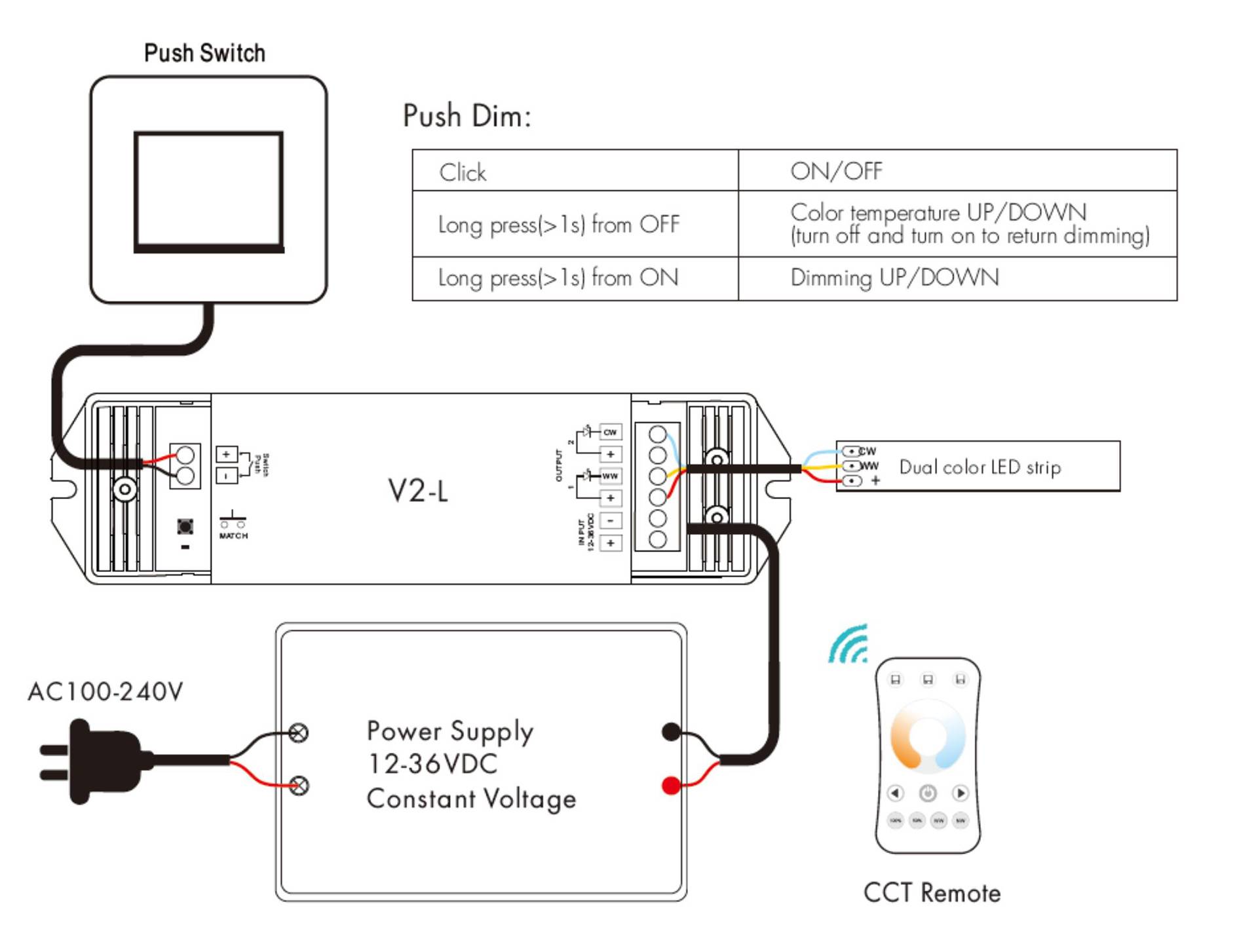
Consider the following comparison of smart control features:
| Feature | Basic LED Strips | Smart LED Strips |
|---|---|---|
| On/Off Control | Manual switch | App, voice, automation |
| Dimming | Limited or none | Full range, precise control |
| Color Changing | Fixed colors | Millions of colors, dynamic effects |
| Scheduling | Not available | Customizable schedules |
| Integration | Standalone | Works with other smart devices |
※ Fact Check: Some advanced LED strip lights can be controlled via Wi-Fi without the need for a separate hub, simplifying the setup process and reducing overall system cost.
※ Fact Check: LED strip lights with individual addressable LEDs (like WS2812B) offer the most advanced control options, allowing for pixel-level color control and complex lighting effects.
Conclusión
Choosing the right LED strip light for your smart home involves considering various factors, from your specific lighting needs to technical specifications like color temperature, brightness, and IP rating. By understanding these aspects and how they relate to your space and requirements, you can select LED strip lights that not only illuminate your home beautifully but also integrate seamlessly with your smart home ecosystem.
Remember, as a professional LED strip light manufacturer, Lightstec offers a wide range of high-quality options to suit every need. Whether you're looking for accent lighting in your bedroom, waterproof solutions for outdoor spaces, or smart-enabled strips for whole-home control, we have the perfect product for you.
By following this guide and considering your unique requirements, you'll be well-equipped to make an informed decision and transform your living space with the perfect LED strip lights.
Q&A
-
P: ¿Cuánto duran normalmente las tiras de luces LED?
A: High-quality LED strip lights can last up to 50,000 hours or more, which is equivalent to over 5 years of continuous use. However, the actual lifespan can vary depending on factors such as usage patterns, environmental conditions, and the quality of the LEDs and components used.
-
Q: Can I install LED strip lights myself, or do I need a professional?
A: Many LED strip lights are designed for easy DIY installation. However, for complex setups, outdoor installations, or if you're not comfortable with electrical work, it's best to consult a professional electrician to ensure safe and proper installation.
-
P: ¿Las tiras de luces LED son energéticamente eficientes?
A: Yes, LED strip lights are highly energy-efficient. They use up to 75% less energy than traditional incandescent lighting, which can lead to significant savings on your electricity bill over time.
-
Q: Can I cut LED strip lights to fit my space?
A: Most LED strip lights can be cut to length, but only at designated cutting points marked on the strip. Always check the manufacturer's instructions before cutting to ensure you don't damage
People Also Care about These Questions
Proceso de fabricación de tiras de luces LED
La producción de iluminación LED requiere una alta precisión, pero muchos fabricantes fabrican sus luces en líneas de montaje básicas. Regulamos y controlamos estrictamente todos los pasos de procesamiento en nuestro sistema de fabricación. También contamos con un conjunto completo de equipos designados para la producción y el control de calidad. Empleamos ingenieros experimentados que también son supervisores de fábrica para garantizar un estricto control de calidad para cada tira de luz LED.
Esperamos que esta publicación aumente su comprensión de la industria de la iluminación LED y le permita seguir desarrollando y explorando la línea de productos.

Paso 1. Material de tira de luz LED IQC
Los materiales llegaron a la fábrica, sin importar PCB, led, ic, resistencia, perfil de aluminio, cables, necesitan verificación de control de calidad. Todos los artículos deben cumplir con el requisito. El control de calidad es lo primero que tenemos que hacer cuando llegan todos los materiales. Tenemos que inspeccionarlos, ya sea que estén calificados o no; sin embargo, aún puede haber algunos productos defectuosos que hayan pasado por todo el proceso de producción: defectos en los materiales, el procesamiento o el envío.

Paso 2. Comprobación de la temperatura de color del LED
Ahora, con todos los chips LED nuevos, debe probar la temperatura de color de los LED. El brillo de un mismo color no siempre es el mismo. El índice de reproducción cromática también es un tema del que debe asegurarse el cliente.
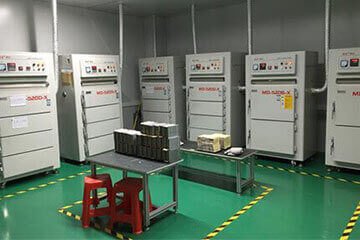
Paso 3. Proceso de secado LED
Por lo general, este proceso será seguido por el proceso SMT. El LED debe secarse antes de procesar SMT. La temperatura de secado no es inferior a 65 ℃ en 8 horas.
Paso 4. Proceso SMT de tira de luz LED
El proceso SMT de tiras de luz LED es ampliamente utilizado en unidades de iluminación modernas. Lo gracioso es que SMT significa tecnología de montaje en superficie, pero la tecnología sobre cómo producir el LED no solo se llama superficie de montaje, sino que también incluye una máquina automatizada de alta velocidad. Mucha gente está malinterpretando esto.

Paso 5. Proceso de soldadura por reflujo de tiras de luz LED
Proceso de tecnología de soldadura por reflujo después de SMT, los componentes y PCB utilizando la pasta de soldadura. El PCB de la máquina de soldadura por reflujo a una cierta temperatura. La soldadura en pasta se funde en la consistencia líquida y luego se une a diferentes componentes.

Paso 6. Proceso de inspección de tiras de luz LED
Tenemos una prueba del 100% para asegurarnos de que no haya daños físicos en los productos. La inspección visual asegura que no haya cambio de color en los LED y si algún componente está desalineado en los puentes de soldadura.
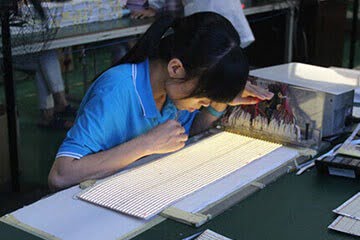
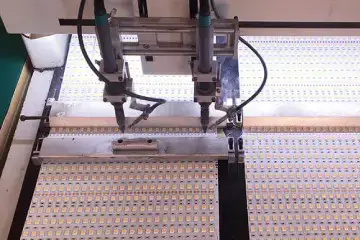
Paso 7. Proceso de soldadura de tiras de luz LED
Algunos PCB de tamaño pequeño con ángulo cero, proceso de soldadura sin plomo. Después de la inspección, la cinta LED pasa a través de una máquina de soldadura, que conecta una cinta de 0,5 m a tiras de 5 m de largo.

Paso 8. Proceso de limpieza de la PCB de la tira de luces LED
La superficie de PCB para la tira de LED tiene un soldador para limpiar. Lo primero que hay que hacer es todavía soldar. Soldar el IC se puede usar para evitar la oxidación durante el proceso de soldadura y luego corte el exceso de cable en un tambor redondo de pasta de dientes, como la oxidación. Después de completar todo esto, podemos continuar limpiándolo.
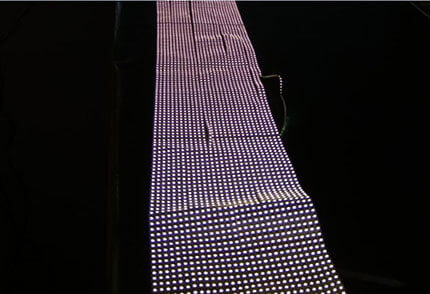
Paso 9. Proceso de envejecimiento de la tira de luz LED
De hecho, todo el producto LED necesita una prueba de iluminación durante 8 horas, para garantizar que cada LED funcione en buenas condiciones. Y podemos medir los colores durante la prueba de iluminación, y si los LED tienen la temperatura de color correcta y si el controlador funciona bien. Por lo tanto, esto es muy importante para que el fabricante se asegure de que todos los LED estén bien.
Paso 10. Proceso de impermeabilización de tiras de luz LED
Las tiras de luces LED son impermeables y también resistentes a la oxidación, lo que las hace adecuadas para una serie de aplicaciones dentro y fuera de la casa. La selección del proceso de impermeabilización de tiras de luz LED es un paso importante en el proceso de fabricación. Hay tubos de silicona IP65 a prueba de agua de alta calidad e inyección de silicona IP67 a prueba de agua disponibles en el mercado.
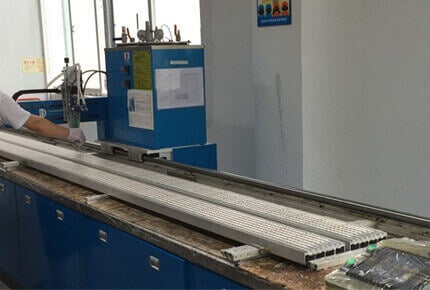
Paso 11. La tira de luz LED agrega el proceso de cinta 3M
La cinta 3M en la parte posterior de la tira brinda a los consumidores comodidad y facilidad para instalar tiras de iluminación LED.
Usamos 3M 9080 para todas las tiras impermeables y no impermeables, algunos clientes solicitan otro adhesivo 3M con mejor adherencia o mejor conductividad térmica, que también está disponible.
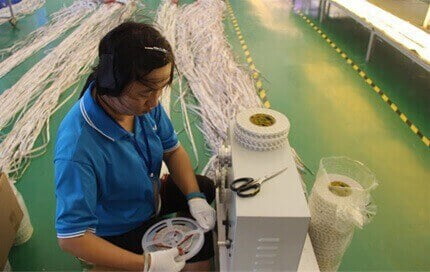
Paso 12. Inspección final de la tira de luces LED
Después de que todo el paquete de tiras de LED haya pasado por nuestro procesamiento, el departamento de control de calidad de LED Starlight realizará una verificación final de nuestros productos. No solo nos aseguramos de que tengan el mismo color de iluminación y estén libres de defectos, sino que también la apariencia sea lo suficientemente buena para cumplir con los requisitos de los clientes.
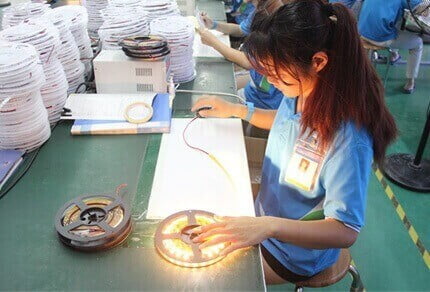
-
Perfil de iluminación arquitectónica (30)
-
Tiras LED COB (4)
-
Canal LED para paneles de yeso (21)
-
Canal LED de tierra (7)
-
Luz de perfil colgante (29)
-
Perfil de aluminio LED (178)
-
Perfil de esquina LED (4)
-
Zócalo de rodapié LED (10)
-
Perfiles de aluminio LED magnéticos (6)
-
Canal LED empotrado (24)
-
Tiras de LED que cambian de color RGBW (8)
-
Perfil LED redondo (2)
-
Tiras de LED de vista lateral (1)
-
Tiras de LED de un solo color (6)
-
Perfil de tira de LED de escalera (2)
-
Perfil led de montaje en superficie (17)
-
Perfil iluminado de tres lados (3)
-
Tiras de LED blancas sintonizables (3)
-
Canal de iluminación debajo del gabinete (18)
-
Luz lineal de pared (11)
-
Perfiles de barandilla de armario (1)
-
Canal LED impermeable (4)

